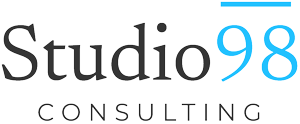The key to creating a website you love is being able to communicate your vision. When you aren’t familiar with a lot of the web terms, sometimes this can be a difficult thing. Here are some useful terms from Smashing Magazine that will help you communicate your vision effectively.
The back end of a website is the part hidden from view of regular website visitors. The back end generally includes the information structure, applications, and the CMS controlling content on the site.
This term is a carry-over from newspaper publishing days. In newspaper terms, “below the fold” means content was on the bottom half of the page (below the physical fold in the paper). In web design terms, “below the fold” refers to the content that is generally going to be below the point first viewable to the average website visitor in their browser (in other words, viewers would have to scroll down to see the content).
Browser refers to the program a website visitor is using to view the web site. Examples include Safari, Firefox, Google Chrome, Opera, and Internet Explorer.
Cached files are those that are saved or copied (downloaded) by a web browser so that the next time that user visits the site, the page loads faster.
Also known as a CMS, the Content Management System is a backend tool for managing a site’s content that separates said content from the design and functionality of the site. Using a CMS generally makes it easier to change the design or function of a site independent of the site’s content. It also (usually) makes it easier for content to be added to the site for people who aren’t designers.
The domain is the name by which a website is identified. The domain is associated with an IP address. Domains can be purchased with any combination of letters, hyphens (-), and numbers (though it can’t start with a hyphen). Depending on the extension (.com, .net, .org, etc.), a domain can be anywhere up to 26 to 63 characters long.
Short for electronic commerce. It’s the buying and selling of goods online, through websites. Products sold through e-commerce can be physical products that require shipping, or digital products delivered electronically.
Favicons are tiny (generally 16×16 pixels, though some are 32×32 pixels), customizable icons displayed in the web address bar in most browsers next to the web address. They’re either 8-bit or 24-bit in color depth and are saved in either .ico, .gif or .png file formats.
A fixed width layout has a set width (generally defined in pixels) set by the designer. The width stays the same regardless of screen resolution, monitor size, or browser window size. It allows for minute adjustments to be made to a design that will stay consistent across browsers. Designers have more control over exactly how a site will appear across platforms with this type of layout.
The font weight refers to how thick or thin (bold or light) a font looks.
The front-end is basically the opposite of the back-end. It’s all the components of a website that a visitor to the site can see (pages, images, content, etc.) Specifically, it’s the interface that visitors use to access the site’s content. It’s also sometimes referred to as the User Interface.
A liquid layout is one that is based on percentages of the browser window’s size. The layout of the site will change with the width of the browser, even if the visitor changes their browser size while viewing the page. Liquid layouts take full advantage of a person’s browser width, optimizing the amount of content you can fit onscreen at one time.
Navigation refers to the system that allows visitors to a website to move around that site. Navigation is most often thought of in terms of menus, but links within pages, breadcrumbs, related links, pagination, and any other links that allow a visitor to move from one page to another are included in navigation.
Refers to the physical number of pixels displayed on a screen (such as 1280×1024). Unlike in print, display resolution does not refer to the number of pixels or dots per inch on a computer screen, as this can be changed by changing the resolution of the screen (which, of course, does not change the physical size of the screen). The resolution of an image, however, is often referred to in terms of pixels per inch, though this has very little effect on how the image is displayed on screen.
Stands for Uniform Resource Locator. A site’s URL is its address, the item that specifies where on the Internet it can the found.
Standards are specifications recommended by the World Wide Web Consortium for standardizing website design. The main purpose of web standards is to make it easier for both designers and those who create web browsers to make sites that will appear consistent across platforms.
